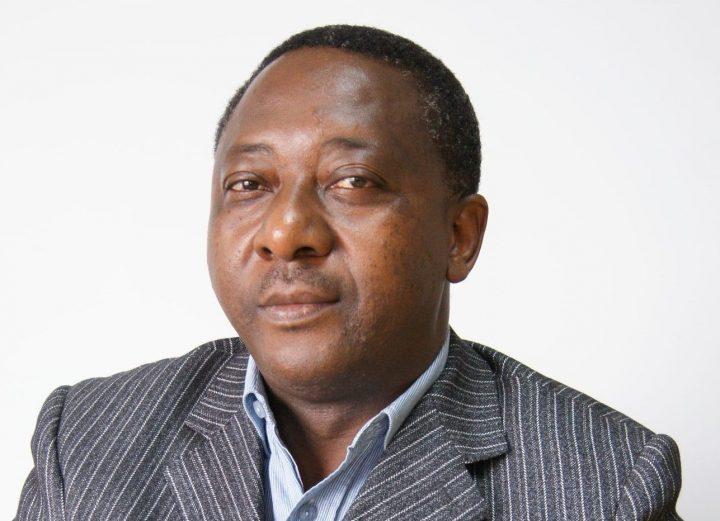Africa-Press – Namibia. My brief paper is intended to outline the significance of a dependable and cost-effective energy supply for mines and industrial users in Namibia and suggests how electricity should be provided through a sustainable electricity grid.
From a generalist point of view, mining companies are profitable if the commodities they mine sell in the market, at predetermined market rates, generating profits for their shareholders. Such profitability is impacted by the input or operational costs which include the cost of capital, labor, energy, fuel & logistics, etc. Excluded from these are the mining rights procured from the Namibian Government, which are in line with international norms. Therefore, for the purposes of this paper, we accept that cost of capital and Namibian labor is affordable and in line with international norms.
Based on real-time experience by our Chamber of Mines members, we are aware of several mining enterprises finding it impossible to kick-start, remain operational or become profitable due to the high input cost of energy and fuel. Of grave concern to our Chamber members is the lack of a competitive energy supply strategy for Namibia, its continued reliance on energy imports from South Africa, and the uncoordinated introduction of renewable energy, raising significant economic risks. Mining companies may opt to generate their own electricity, but it is almost never cost-effective as it is not its core business.
Cost-effective dependable energy should originate from a country’s own electricity grid. An electricity grid allows for the introduction of economies of scale electricity generation and Offtakers that consume the energy at differentiated tariffs. Such a grid is then managed by operating it close to its equilibrium point by keeping the frequency to 50Hz (+/- 0.5Hz). This means that if there is an under-supply of electricity, blackouts occur, or load shedding will have to be introduced. On the other hand, an oversupply will cause an increase in frequency resulting in similar effects. There are more detailed theoretical or technical descriptions but the intent here is to discuss matters regarding electricity generation and the grid in Namibia.
Electricity demand is generally described as the demand by all users on a grid network with the average energy demand referred to as baseload which remains relatively constant. Countries with industrial Offtakers such as mines and smelters will usually require stable cost-effective baseload as part of their generation mix. Importantly, the gap between the average demand and high demand is normally referred to as peak demand and may also be referred to as spinning reserves (sometimes also seen as mid merit & peak demand). Spinning reserves are usually called for when certain components of the electricity grid fall away and should be dispatchable immediately when required (such as periods of cloud cover over PV installations).
Namibia does not possess the required baseload generation or standby spinning reserves for an electricity grid its size and wholly depends on ESKOM to keep Namibia’s lights on. Therefore, the security of electricity supply is identified as one of the major economic business risks to all mining companies, especially with ESKOM struggling to keep South Africa’s grid going, as well as the steep upward tariff trends published by NERSA. NamPower and the ECB allow IPP’s to introduce renewables into the Namibian grid, potentially creating an even bigger disaster, especially when ESKOM has no option but to introduce load shedding in Namibia. The entire Namibian grid will fail with any form of load shedding from ESKOM.
The key question that remains is: what about the renewables in the Namibian grid? Renewables can and will contribute to the grid, but unless baseload is in place with supporting standby spinning reserves, Namibia will always depend on ESKOM to maintain its electricity grid.
Several mines are unable to acquire cost-effective electricity in support of their business plans, and as such, are struggling to keep going or simply do not get out of the starting blocks. The current fragmented approach by NamPower places Namibia at high risk as energy costs are too high and the security of supply is non-existent due to ESKOM running below its own guaranteed levels of power generation. (This is also evident with South Africa changing the allowed embedded generation from 1MW to100MW).
Tariffing of energy needs to be carefully considered in carving out an economical and feasible way forward. The ECB’s Modified Single Buyer Model (MSBM) is not creating a competitive environment for reducing the tariffs and enhancing the security of supply, as it carves out easy sections or options in a generation. This is not a sustainable strategy. The MSBM does not allow smaller participants to competitively make a difference as the capacity charge from NamPower remains in place for standby purposes. A proper Utility Blend Model is required! This means that having proper baseload in place, such as Gas-to-Power[1], with renewables blended into the generation cycle will reduce tariffs significantly. This unfortunately is not the task for IPP’s but for Utilities, such as NamPower, who should consider blending its tariffs.
Namibia has some of the world’s best natural resources which can if addressed correctly, unlock phenomenal value for the country and its economy. The pandemic has placed enormous strains on the mining sector, and as the Chamber of Mines, we require solutions to: Source: Chamber of Mines of Namibia






